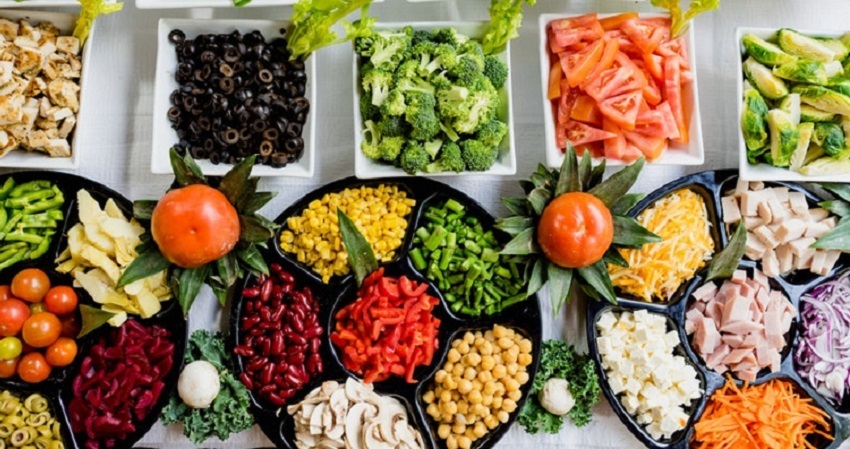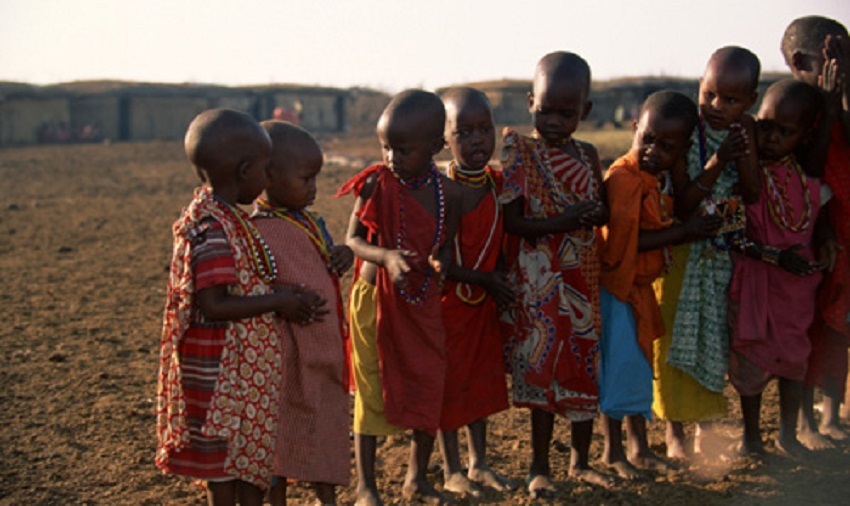Food Resources

Food Resources are plentiful
It has been calculated that even if the world's population reached 28 billion it would still be possible to feed everyone by applying existing methods of technology. Future technological innovations ought to make this situation even more manageable. Whether someone starves or not, does not depend on how many people are with him, but in which society he happens to live. Two million people could easily starve in Rwanda, but 18 million can be fed every day in Tokyo.
According to Worldhunger.org, The world produces enough food to feed everyone.World agriculture produces 17 percent more calories per person today than it did 30 years ago, despite a 70 percent population increase. This is enough to provide everyone in the world with at least 2,720 kilocalories (kcal) per person per day (FAO 2002, p.9).
The principal problem is that many people in the world do not have sufficient land to grow, or income to purchase, enough food. The distribtion of wealth and colonial policies have devasted certain countries.
Floating vertical farms offer food solutions to the densest countries on Earth
Challenges require humans to innovate and produce great feats of engineering and technology. Consider these floating food farms which architects from a Barcelona-based design firm called JAPA have designed - a system of looping towers that would float in Singapore's harbours and grow crops throughout the year. Called FRA, which is short for 'floating responsive architecture’, the design was based on the floating fish farms that have been used by Singapore locals since the 1930s.

Engineers declare that Population growth not a threat
A report published early 2011 by the Institution of Mechanical Engineers entitled Population: One Planet, Too Many People? was quite optimistic about people's abilitys to feed and look after themselves and othes. As the report's lead author, Dr Tim Fox, pointed out, its verdict is not based on speculative guesses about the development of new agricultural processes as yet unknown: "We can meet the challenge of feeding a planet of 9 billion people through the application of existing technologies". For example, Dr Fox pointed out, in Africa, no less than half the food produced is destroyed before it reaches its local marketplace: with refrigeration and good roads, the developing world could avoid this horrendous waste.
- Read Dominic Lawson's take on this report in the Independent (UK)
- Read the report Population: One Planet, Too Many People? from the Institute of Mechanical Engineers
Lawson also mentions in his article in the Independent entitled, The population timebomb is a myth, that another detailed report on "sustainability" was published also in January 2011 by the French national agricultural and development research agencies and that they more or less agreed with the IME. The French scientists set themselves the goal of discovering whether a global population of 9 billion, the likely peak according to the UN, could readily have access to 3,000 calories a day, even as farms take measures to cut down on the use of fossil fuels and refrain from cutting down more forests: their answer was, you will be thrilled to know, "yes".

More grain on less land
Thanks to the continuing increases in crop yield, the world's farmers actually harvest several hundred million tons more grain each year on tens of millions of acres less land than formerly.
With regard to total wheat and coarse grains: in 1974/75, the total area harvested was 552.8 million hectares, the yield at 1.77 and the production was 977.9 million tons. In 2003/03, the total area harvested was 510 million hectares, the yield at 2.81 and the production was 1431.0 million tons.
According to Nikos Alexandratos of the Global Perspective Studies Unit, in Rome Italy, in his document World Food and Agriculture, December 1998,
“The fears of impending food crisis that dominated the thinking of some observers up to about mid-1997 have subsided following the reversal of the signals of scarcity (rising prices in world markets) It is now well accepted that, at least over the medium term, there appear to be no major global constraints to expanding world food production at a rate sufficient to match the growth of the effective demand for food.”
There is an abundance of food
Abundance, not scarcity, best describes the world's food supply. Enough wheat, rice and other grains are produced to provide every human being with 3,500 calories a day. That doesn't even count many other commonly eaten foods - vegetables, beans, nuts, root crops, fruits, grass-fed meats, and fish. Enough food is available to provide at least 4.3 pounds of food per person a day worldwide: two and half pounds of grain, beans and nuts, about a pound of fruits and vegetables, and nearly another pound of meat, milk and eggs-enough to make most people fat! The problem is that many people are too poor to buy readily available food. Even most "hungry countries" have enough food for all their people right now. Many are net exporters of food and other agricultural products.
Nature is not always to blame
Human-made forces are making people increasingly vulnerable to nature's vagaries. Food is always available for those who can afford it—starvation during hard times hits only the poorest. Millions live on the brink of disaster in south Asia, Africa and elsewhere, because they are deprived of land by a powerful few, trapped in the unremitting grip of debt, or miserably paid. Natural events rarely explain deaths; they are simply the final push over the brink. Human institutions and policies determine who eats and who starves during hard times. Likewise, in America many homeless die from the cold every winter, yet ultimate responsibility doesn't lie with the weather. The real culprits are an economy that fails to offer everyone opportunities, and a society that places economic efficiency over compassion.
Why are there food shortages if there are falling birthrates
Birth rates are falling rapidly worldwide as remaining regions of the Third World begin the demographic transition—when birth rates drop in response to an earlier decline in death rates. For every Bangladesh, a densely populated and hungry country, we find a Nigeria, Brazil or Bolivia, where abundant food resources coexist with hunger. Costa Rica, with only half of Honduras' cropped acres per person, boasts a life expectancy—one indicator of nutrition —11 years longer than that of Honduras and close to that of developed countries. Rapid population growth is not the root cause of hunger. Like hunger itself, it results from underlying inequities that deprive people, especially poor women, of economic opportunity and security.
The Environment is not at risk
Efforts to feed the hungry are not causing the environmental crisis. Large corporations are mainly responsible for deforestation-creating and profiting from developed-country consumer demand for tropical hardwoods and exotic or out-of-season food items. Most pesticides used in the Third World are applied to export crops, playing little role in feeding the hungry, while in the U.S. they are used to give a blemish-free cosmetic appearance to produce, with no improvement in nutritional value.
Alternatives exist now and many more are possible. The success of organic farmers in the U.S. gives a glimpse of the possibilities. Cuba's recent success in overcoming a food crisis through self-reliance and sustainable, virtually pesticide-free agriculture is another good example. Indeed, environmentally sound agricultural alternatives can be more productive than environmentally destructive ones.
Farming needs to be examined
Large landowners who control most of the best land often leave much of it idle. Unjust farming systems leave farmland in the hands of the most inefficient producers. By contrast, small farmers typically achieve at least four to five times greater output per acre, in part because they work their land more intensively and use integrated, and often more sustainable, production systems. Without secure tenure, the many millions of tenant farmers in the Third World have little incentive to invest in land improvements, to rotate crops, or to leave land fallow for the sake of long-term soil fertility. Future food production is undermined. On the other hand, redistribution of land can favor production. Comprehensive land reform has markedly increased production in countries as diverse as Japan, Zimbabwe, and Taiwan. A World Bank study of northeast Brazil estimates that redistributing farmland into smaller holdings would raise output an astonishing 80 percent.
Too poor to buy their own food
The trade promotion formula has proven an abject failure at alleviating hunger. In most Third World countries exports have boomed while hunger has continued unabated or actually worsened. While soybean exports boomed in Brazil-to feed Japanese and European livestock-hunger spread from one-third to two-thirds of the population. Where the majority of people have been made too poor to buy the food grown on their own country's soil, those who control productive resources will, not surprisingly, orient their production to more lucrative markets abroad. Export crop production squeezes out basic food production. Pro-trade policies like NAFTA and GATT pit working people in different countries against each other in a 'race to the bottom,' where the basis of competition is who will work for less, without adequate health coverage or minimum environmental standards. Mexico and the U.S. are a case in point: since NAFTA we have had a net loss of 250,000 jobs here, while Mexico has lost 2 million, and hunger is on the rise in both countries.
Paid not to produce food
World food production is so efficient that many governments, including our own, spend billions of euro a year to pay farmers not to grow food in order to prevent a food price collapse. Barring some unforeseen blight on world agriculture, there is no chance of the world's being unable to feed itself. Famines today are caused by distribution problems, usually produced by war or deliberately inflicted by corrupt governments to enhance their own power.